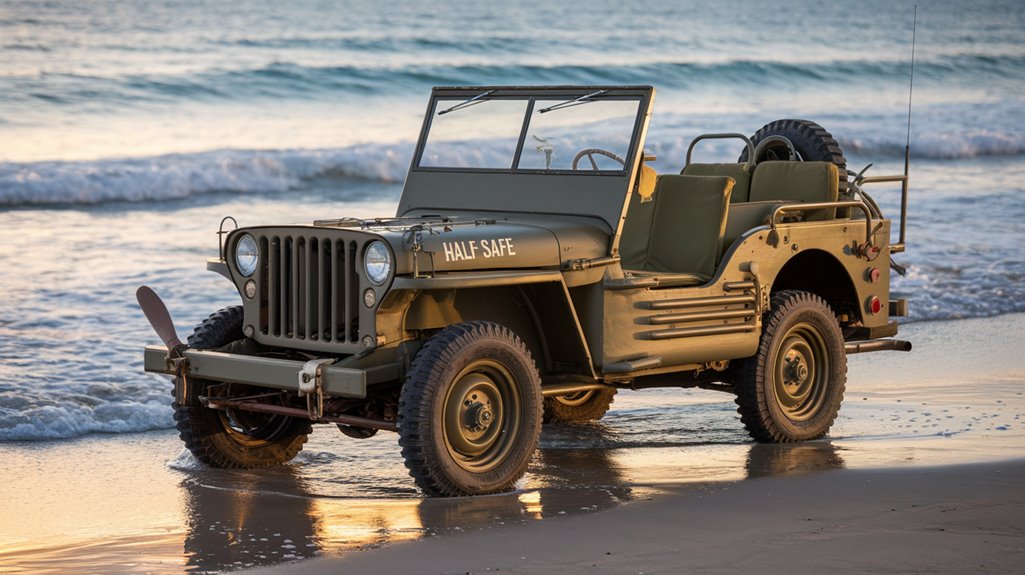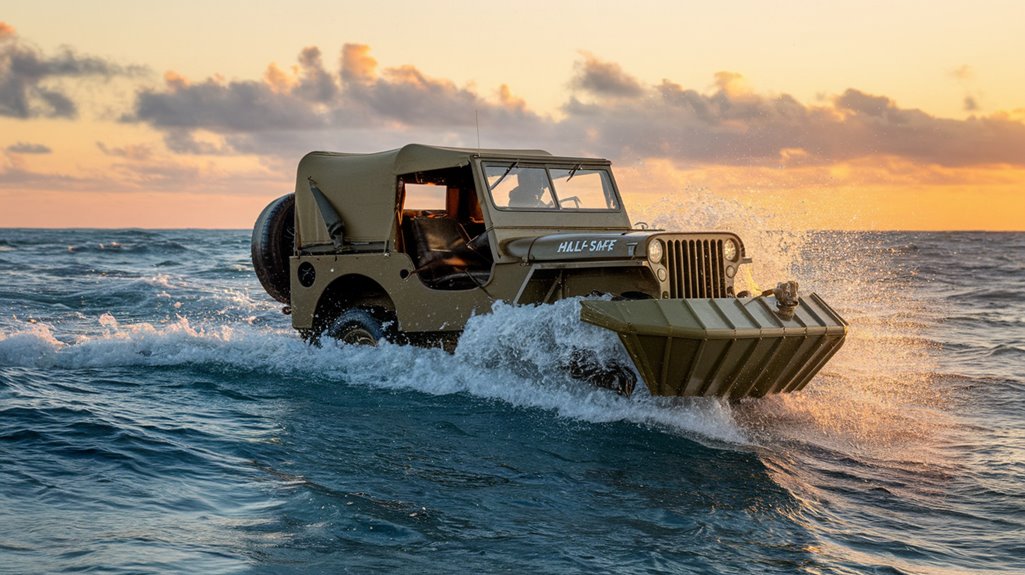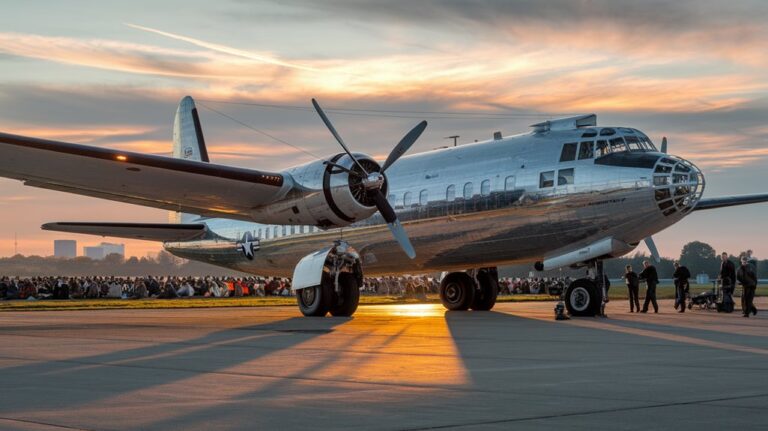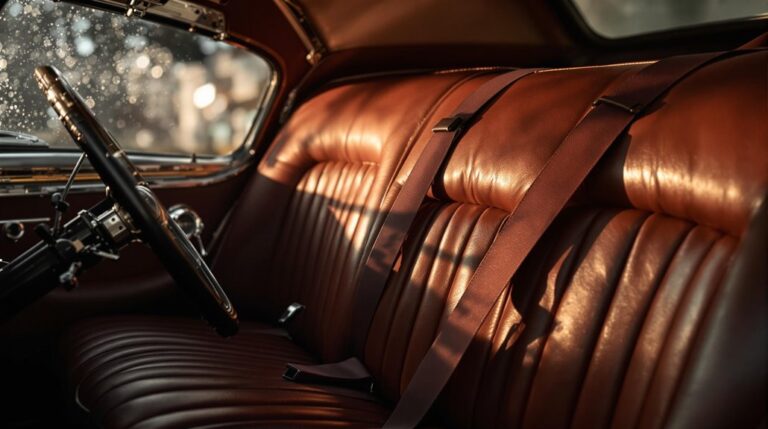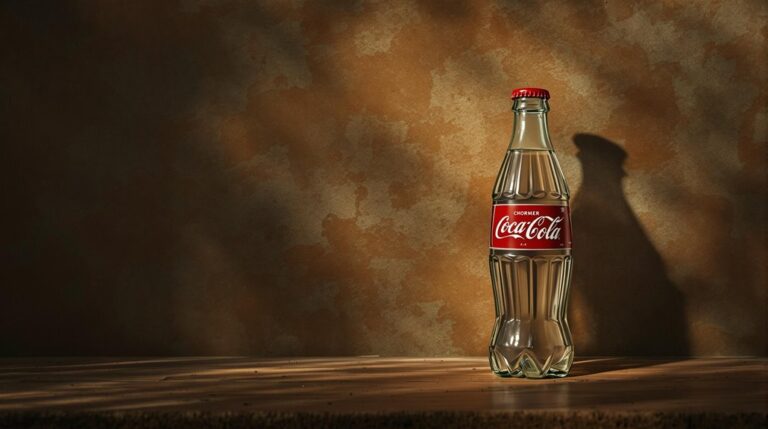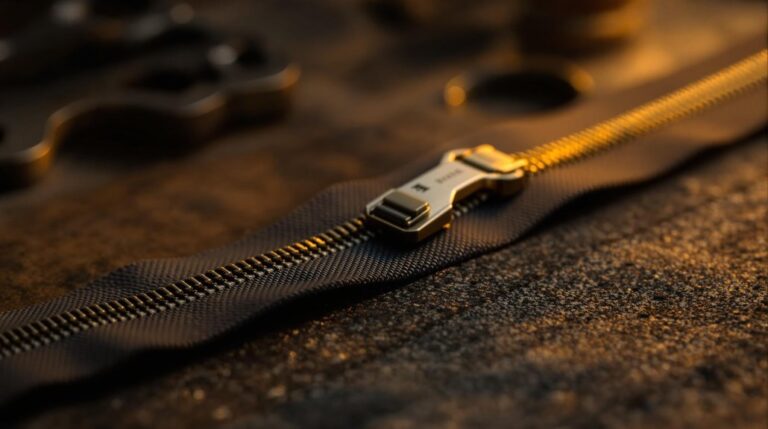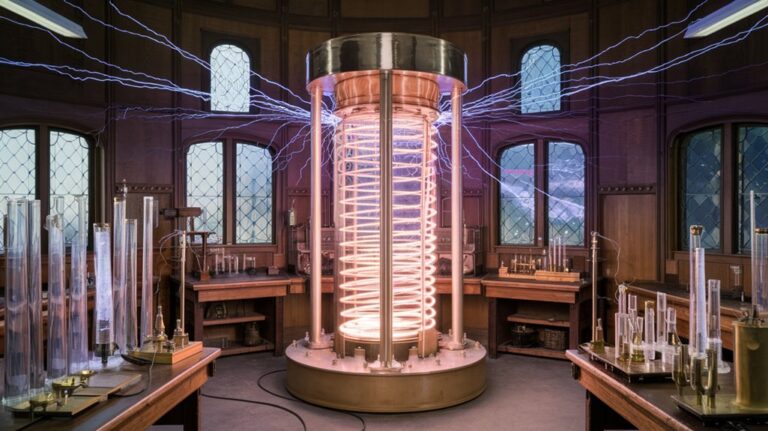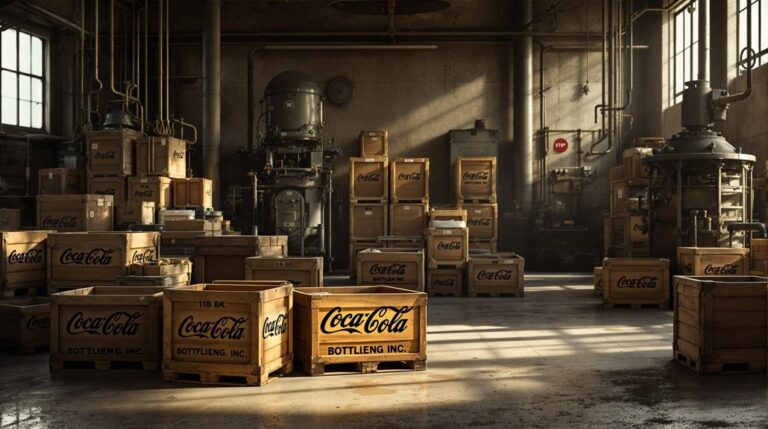Half-Safe: The Amphibious Jeep That Circled the World
When you consider that only 12,778 Ford GPA amphibious jeeps were ever produced during World War II, it's remarkable that one of them would go on to circle the entire globe. You've probably never heard of Half-Safe or its determined captain Ben Carlin, but their journey represents one of the most ambitious automotive adventures in history. The story of how this war surplus vehicle became the first amphibious craft to circumnavigate the world reveals an extraordinary tale of human persistence and mechanical ingenuity.
The Birth of an Amphibious Dream
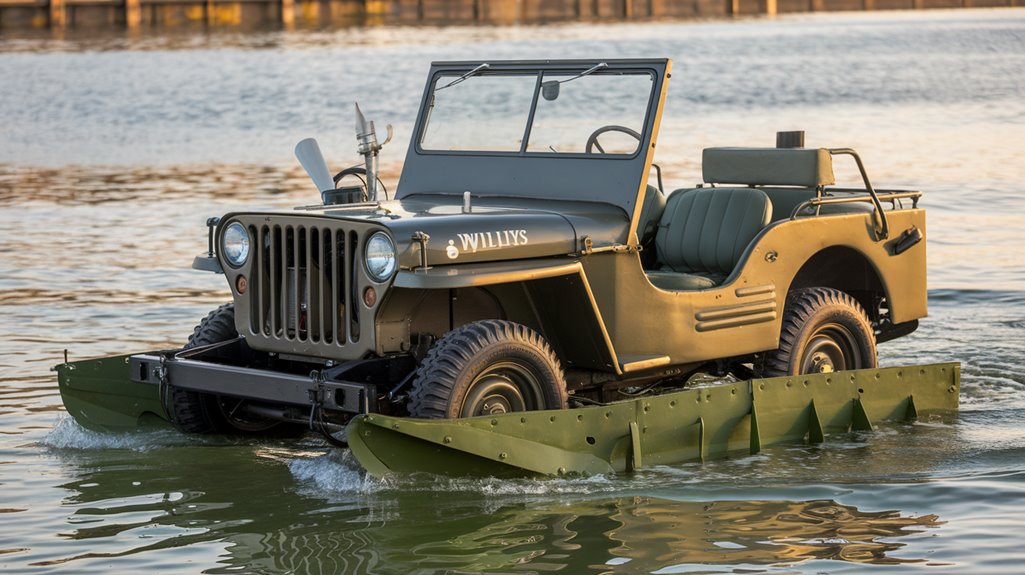
While World War II produced many specialized military vehicles, none would later capture imaginations quite like the Ford GPA amphibious Jeep.
This military innovation, designed to navigate both land and sea, emerged as one of the war's most ambitious yet ultimately disappointing projects. You might be surprised to learn that despite producing nearly 13,000 units, the GPA's amphibious design proved inadequate for combat, struggling with slow land speeds and rough waters. The vehicle became informally known as the Seep (ship-Jeep). The name GPA itself represented Ford's military designation for this unique vehicle.
But where military strategists saw failure, one man saw opportunity.
After the war, Ben Carlin spotted a surplus GPA in a U.S. army store and purchased it for $901. He'd transform this castoff military vehicle into "Half-Safe," extensively modifying it with an enclosed cabin, larger propeller, and massive fuel capacity for his dream of circumnavigating the globe.
Engineering the Impossible
Though creating an amphibious vehicle sounds straightforward in theory, the engineering challenges of making a vehicle perform effectively on both land and water are immense.
You're fundamentally designing two vehicles in one, each with its own complex set of requirements and safety innovations.
When you look at Ben Carlin's modifications to Half-Safe, you'll understand the depth of these design challenges. He'd to completely reimagine the Ford GPA's original design, adding an enclosed cabin for ocean protection and expanding fuel capacity for long-distance travel.
Modern amphibious vehicles face even more hurdles, from strict environmental regulations to complex performance demands in chaotic surf zones. The CRAB vehicle successfully operates in challenging conditions, reaching depths of 9 meters while maintaining stability for critical research operations. Small-scale models are often built to test new designs and gather crucial data about vehicle performance.
That's why universities like Iowa conduct extensive hydrodynamic research and testing to understand how these vehicles behave in coastal waves, helping engineers create safer, more reliable designs.
Crossing Oceans in a Modified Jeep
Ben Carlin's epic journey began with a simple spark of inspiration – seeing an amphibious jeep in India after World War II.
He transformed his vision into reality by adding an enclosed cabin, larger propeller, and massive 735-gallon fuel capacity to tackle ocean navigation.
You'd think crossing oceans in a modified jeep would be impossible, but Carlin proved otherwise.
Despite initial setbacks, including a rescue 230 miles off New York, he persevered. The team struggled with severe carbon monoxide poisoning during their first sea trial attempt.
His first successful crossing took him from Montreal to Portugal via the Azores, while his second ocean journey stretched from Japan to Alaska.
The vehicle modifications weren't perfect – Half-Safe sat low in water, lost its cloth sea anchor to storms, and once drifted for 10 days after losing its propeller.
Still, Carlin managed 11,000 miles of ocean travel.
The incredible journey ended in Montreal, Canada, completing both land and sea circumnavigation where it all began.
Survival Against the Elements
Facing the elements in a modified amphibious jeep proved far more challenging than anyone could have imagined. The Half-Safe's crew resilience was tested by gale-force winds, Hurricane Charlie, and waves that slowed their progress to a mere 2 miles per hour. They completed the remarkable feat in ten years total.
You'd be amazed how they navigated using only the stars and knowledge from a secondhand book. Environmental adaptation became essential as they battled carbon monoxide poisoning from a cracked exhaust pipe and endured life in a cramped 5-foot-wide cabin.
The journey demanded constant vigilance, with the crew facing severe seasickness, hallucinations, and sleep deprivation. Ben Carlin's marriage ended when Elinore left in Kolkata. Through tropical heat and arctic cold, they pushed on, managing a complex fuel system that required anchoring to siphon from floating containers.
Their 200-gallon tank eventually expanded to 735 gallons for ocean crossings.
A Record-Breaking Legacy
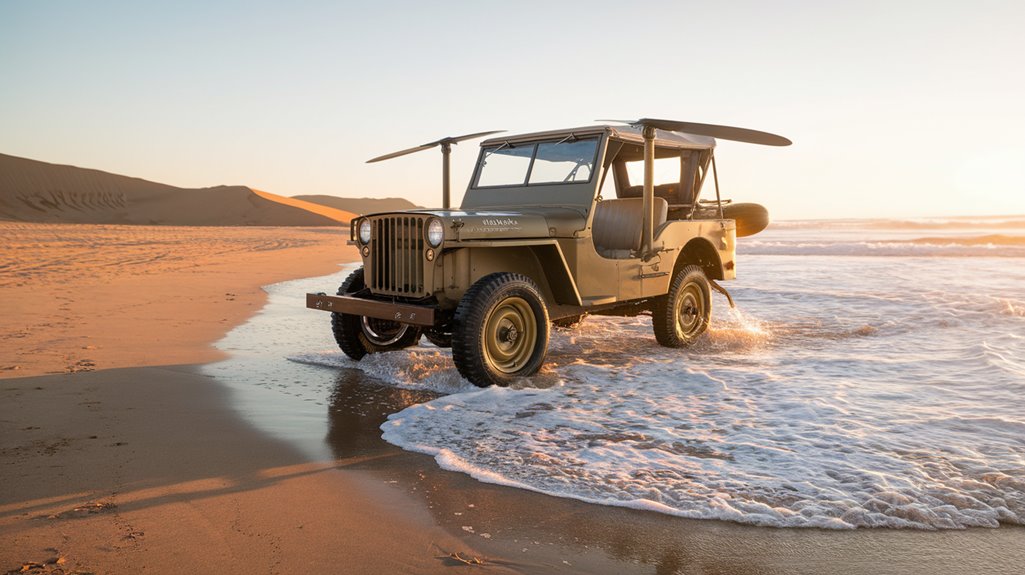
After enduring countless hardships across land and sea, the Half-Safe expedition cemented its place in history as the first and only amphibious vehicle to circumnavigate the globe.
The vehicle faced numerous failed attempts before achieving its successful crossing of the Atlantic Ocean in 1950.
Ben and Elinore Carlin relied on celestial navigation during their Atlantic crossing, steering through vast ocean expanses without seeing other vessels.
You'll find this remarkable record achievement permanently etched in the Guinness World Records, marking an unmatched feat that combined 62,765 kilometers by land and 15,450 kilometers by sea over a decade-long journey.
The adventurous spirit of this expedition lives on at Guildford Grammar School in Western Australia, where Half-Safe stands as a symbol of human determination.
Through books, films, and documented stories, this modified Ford GPA's incredible journey continues to inspire modern overlanding enthusiasts.
The vehicle's successful circumnavigation, completed on May 8, 1958, remains unmatched, proving that with enough persistence, seemingly impossible dreams can become reality.

